Remember when people used to say, “As American as baseball, hot dogs and apple pie?” I surely do. That’s about as accurate of a statement as one can make. There are probably no three better representatives of the goodness of our country. I love all of them. The thing is, if I had to choose my favorite, by far I would choose baseball.
Now don’t get me wrong. There’s nothing like a grilled hot dog encased in a warm bun topped with your preferred fixings. It’s pure honest deliciousness. And a slice of freshly baked apple pie with a buttery, flaky crust? Are you kidding — it’s a bit of heaven on Earth. Make it a la mode with a scoop of fresh vanilla ice cream and now we’re really talking.
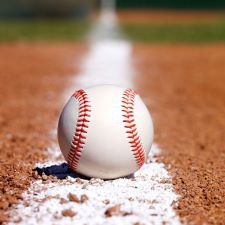
But a hot dog is only as good as the person preparing it. Same goes for apple pie. Baseball, on the other hand, is unassailable. It’s kinda perfect, I think. There’s a reason why it’s our National Pastime.
Why our greatest game is so great
I admit, there has been a gradual yet consistent decline in the popularity of baseball. Kids today prefer the faster action of football and basketball, skateboarding and video games, and that saddens me. It’s not just youngsters who do not care much for baseball. According to the Washington Post, only 11% of adults now consider baseball their favorite sport.
Count me amongst that proud 11%. In fact, baseball isn’t just my favorite sport, it’s still the greatest sport out there. Better than football and basketball and hockey and soccer and golf any other game that involves a ball and fans and a scoreboard.
Let me you tell why.
Baseball is more than a mere source of entertainment: Going to a baseball game is a communal experience, something you feel upon first entering the stadium as you glimpse the grass and the symmetry of the field. There’s a certain majesty to soaking in the 360-degree scene. Strangers chat with each other. Children smile at the adults seated next to them. Fans share their peanuts with other fans. People bond at baseball games.
Baseball has no clock: Unlike other sports, there’s no set amount of time to finish. No quarters, no periods, no buzzers. I suspect that’s why there’s not only a relaxed pace of play, there’s also a leisurely vibe in the stands, as well as at home or your local watering hole when watching on TV. You can go for more snacks without feeling like you have to rush back to your seat. You can have a long-drawn-out conversation. Baseball decides when it wants to end.
Baseball has more games: Football gives you a measly 17 games? Gimme a break. Baseball provides a whopping 162 games over almost seven months. You can always catch some action, whether you attend a game or watch one on the tube (and these days you can even watch one on your smartphone).
Ballparks are world-class destinations: Yankee Stadium, Wrigley Field, Fenway Park, AT&T Park, Camden Yards, Dodger Stadium. These are architectural wonders, as well as places steeped in historical lore. You can practically feel and smell the past. Fans both young and old talk about former ballparks like the Polo Grounds, Ebbets Field, and Griffith Stadium as if they are long-lost shrines.
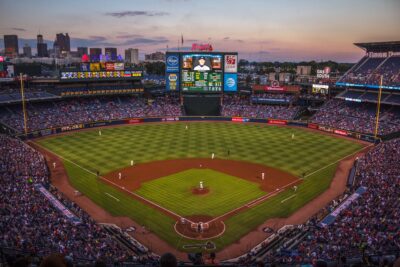
Baseball has the most storied rivalries: Yankees vs. Red Sox, Cubs vs. Cardinals, Dodgers vs. Giants. The match-ups in themselves convey hatred, bitter struggles, pure loathing, and classic performances. Other sports may have longstanding rivalries, but they pale in comparison to the passion that fuels baseball’s most contentious battles. Even if the games don’t matter in the standings, they always matter to the fans. And sure, you have Duke vs. UNC in college basketball or Steelers vs. Browns in pro football, but it just isn’t the same — not even close.
Baseball has the most important numbers: 714, .406, 2030 (and later 2,632), 755, 511, .366, 61 (and later 73), 4,256. Baseball fans not only know who to associate with each of those numbers, they understand the historical context and the enormity of the achievements. Numbers are sacred in baseball. Not many can immediately say how many yards Emmitt Smith rushed for to become the NFL’s all-time leader. Wayne Gretzky scored how many goals? Kareem Abdul-Jabbar scored how many points?
There’s nothing like Opening Day: If spring is about renewal, its crown jewel is baseball’s opening day. Opening Day isn’t simply the beginning of the season, it’s an event — a celebration of hope, of optimism, of eternal youth. Players and fans are pumped for the grandeur and pageantry of the season’s first pitch and at-bats. Opening Day should be a national holiday. I’m serious.
Baseball has the best Hall of Fame: A trip to Cooperstown, New York, is a journey to one of the key landmarks of American history. No other building honors its sport like the baseball Hall Of Fame.
Baseball has the only All-Star Game that matters: Does anyone care about all-star games for other sports? Enough said.
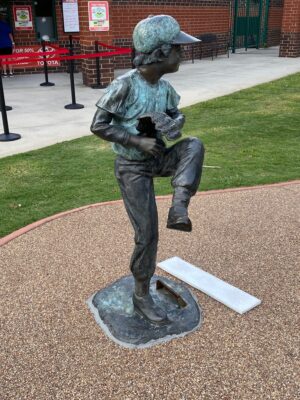
“Take Me Out to the Ball Game”: In a game packed with tradition, the sing-along that occurs in the 7th inning of every game stands right near the top of fan favorites. “Take Me Out To The Ballgame” was written in 1934, yet it’s still as fresh and warmly embraced today.
Hitting a baseball is the hardest thing to do in all of sports: Doubt me? If you don’t have a hotline to query Michael Jordan about this, consider that in baseball you can fail at a 70% clip and still be the crème de la crème of the game. And being successful even 30% of the time isn’t easy — that ball is rocketing toward you at as much as 100 mph, curving and dipping and sliding, with you having to react within one-tenth of a second.
The crack of a bat: Is there a sweeter sound in this world?
The pace of the game: Yes, there are those who say baseball is too slow, but there is a beautiful rhythm to MLB games. Contrast that with the NFL, with its instant replay, coaches’ challenges, kickoffs into the end zone, overly protecting the quarterback, constant commercial breaks, and more. In basketball there’s a foul (and stoppage of play) every other minute, especially at the end of games.
The strategy: In baseball there’s “the game within the game.” Every pitch, every re-positioning of the infield or outfield, every single decision is driven by what happened before (both during the game and in prior games) and what might happen later in the game. It’s the ultimate thinking person’s game; it’s a chess match every pitch.
An array of athleticism: Baseball players perform the dynamic to the nuanced to everything in between. The perfectly placed fastball that nicks the corner of homeplate; the diving center fielder fully extended in mid-air to snag a deep line drive; the synchronization of the perfectly executed 5-4-3 double play; the beautiful swing that launches one over the right field fence; the purposefully directed groundball to the right side of the infield to move a runner up a base.
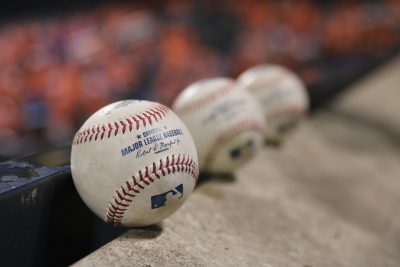
Baseball movies: Field of Dreams, Major League, 42, Bull Durham, The Sandlot, The Natural, For the Love Of the Game, Moneyball, The Rookie, A League Of Their Own, Eight Men Out, Fever Pitch, Bad News Bears, Trouble With the Curve, Pride Of the Yankees. Although other sports’ movies occasionally hit a home run (sorry … had to do that), their classic cinematic efforts fall far short of baseball’s contribution to film.
Back in the day
Of course, I realize my opinions are brewed with a generous helping of nostalgia. I can’t remember a time when baseball wasn’t a part of my life. At big-league games, I devotedly kept score with a good old-fashioned pencil and eraser. I taught my wife how to keep score. The woebegone Senators were my team, but I could scoot up the BW Parkway and watch some terrific Baltimore Orioles teams. We were season ticket holders to the Florida Marlins for 13 years (and two championships).
As a kid, I listened to Washington Senators’ games on the transistor radio. Remember, those were the days when you rarely even knew what many players looked like. We kids relied on the front and back of our baseball cards and the occasional in-person or televised game, but for the most part we had to imagine how the certain players swung the bat, how they ran the bases after smashing a double into the gap in deep left center field, how they dropped a fall-off-the-table curve on the inside corner of the plate. The AM radio announcers that had my late-night attention at that time, Don Daniels and John MacLean, weren’t telling me what was happening on the field as much as they were telling me suspenseful stories.
Every day, especially in the summer, was about nothing but playing sandlot, Boys Club and high school baseball. It was about pitching, catching, or batting in pickup games on the local middle-school field until it became so dark that we couldn’t see the ball. It was about drawing the chalk outline of the strike zone on the school wall and wearing out tennis balls pounding the bricks. I discovered the importance of being a part of a team.
We played pickle. For pure fun, I played wiffleball games with my buddy Gary, with both of us taking the “presence and stance” of our favorite team’s players (including batting either left- or right-handed). I once got Ted Williams to autograph a ball I caught during batting practice.
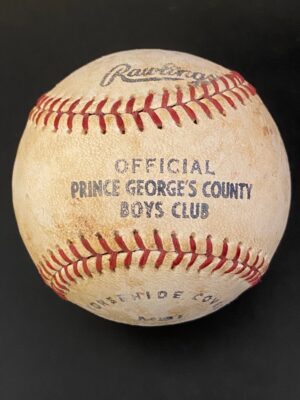
I cherish the time we won a Boys Club championship, in which I doubled in a run. I recall the feeling of throwing a runner out at the plate from right field, and later throwing runners out at second base as a catcher. I fondly recall learning how to throw a decent knuckleball. One of the greatest accomplishments of my youth was when I pitched a one-hitter into extra innings in my junior year of high school. You know, I wasn’t even a very good ballplayer, but I loved the game. And still do with all of my heart.
Change is good
As much as I love baseball, I’m always open to the idea of improvement. If anything makes the experience better for players and fans without sacrificing the game’s integrity, I’m all for it.
The purists out there cringe at altering the rules, but if you look at the history of baseball, there have always been changes made to enhance the game. In 1920, the spitball was banned. Up until 1891, a team could only substitute one player during the game. Foul balls didn’t count as strikes until 1901. In 1968, the mound was lowered to increase offense.
We’ve seen some good fixes lately. I like instant replay. I like interleague play and having the DH in both leagues. But we need more revisions. For one, there is too much inconsistency when it comes to the calling of balls and strikes. The strike zone should be the strike zone. End of story.
Here’s an example why: A few weeks ago during a Blue Jays and White Sox game, home plate umpire Doug Eddings missed (according to Umpire Auditor) 29 calls, the most missed calls in a game this season. His called-strike accuracy scored a putrid 64%. The players, managers, and coaches in both dugouts were livid, and who could blame them? Fix it. There’s no reason all the calls shouldn’t be right. Implement the electronic strike zone. The home plate umpire won’t go away — there is still plenty for him to do back there. Technology could easily resolve this issue.
Baseball also needs to rein in defensive shifting. The strategy should either be outlawed or only allowed for one or two at-bats per game — manager’s call. Otherwise, require teams to keep two infielders on each side of the second base bag, which will increase batting averages and offense. Yeah yeah yeah … I know, it’s not fair to punish clubs for being smarter than others with their defensive positioning. So what? If something helps to increase interest in the game, let’s do it.
One change we don’t have to debate anymore is the pitch clock. Starting in the 2023 season, we’ll see a 14-second pitch clock with the bases empty and an 18-second clock with runners on base. No longer will pitchers be able to take their own sweet time between pitches. The pace of play will speed up, which is something everyone will appreciate. Now MLB executives have to figure out a way to keep the batters in the box between pitches.
There is one change I’m not crazy about. I’m talking about the rise of analytics. Decisions used to be made based on instinct, observation, and knowledge of the game, but they’re now principally made by MBA graduates looking at spreadsheets. It’s Moneyball on steroids.
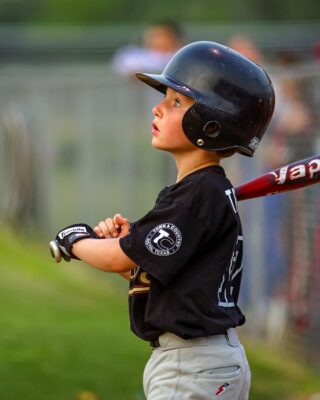
For those unaware, teams now employ data scientists to slice and dice and analyze every single facet of the game to supposedly improve outcomes. That’s not entirely a bad thing, but it’s gone too far. The use of analytics has sucked some of the poetry and romance out of baseball. In some cases, it’s also made common sense a bystander.
As an example: It was game six of 2020 World Series between the Tampa Bay Rays and the Los Angeles Dodgers. If the Rays lose, the Dodgers win the series. Good thing for the Rays that their starting pitcher Blake Snell was throwing the clutch game of his life. Through five innings he had struck out nine while only surrendering two hits. The Rays led 1-0.
Then analytics took over. Apparently, the odds aren’t good when a pitcher faces a specific batter for the third time in the same game. Rays’ Manager Kevin Cash replaced Snell with reliever Nick Anderson, who immediately ruined Snell’s masterpiece: He gave up two runs within four batters. The Dodgers won the game and were crowned World Champions for 2020.
The problem is that analytics give more power to data than necessary. Baseball now is largely about “the three true outcomes” — strikeouts, walks, and home runs. Home runs are deemed as the most significant stat in relation to winning, which is why players have literally changed the trajectory of their swings to increase the number of homeruns they hit. And it’s worked — more homers are hit than ever before, but we’re also seeing a record number of strikeouts. Combine that with less stolen bases, bunting, and suicide and safety squeezes, and moving runners over to scoring position, and you have a lot less actual action on the field. There’s too much standing around. Way too much standing around.
It’s still baseball
No matter what happens, baseball always endures. Through scandals, strikes, controversy, and the analytics trend, our national pastime remains a source of joy because the game is still a great game. It’s still the best.
No athlete personified passion like Pete Rose. To me, no athlete played with more pride than Frank Howard, who kept his head high despite spending his best years on bad teams. No athlete did more for America than Jackie Robinson. No athlete exhibited courage like Lou Gehrig. No athlete gave back more than Roberto Clemente.
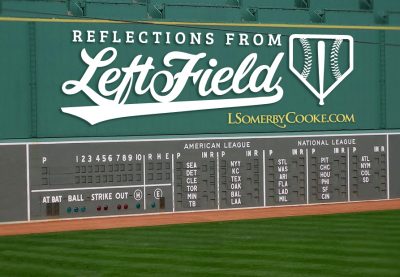
I have revered so many players throughout the decades, and not just for their accomplishments on the field but also for their character as human beings. Men like Cal Ripken, Sandy Koufax, Bob Gibson, Frank Robinson, Brooks Robinson, and Jim Palmer. And that tradition continues with the latest generation of greats like Clayton Kershaw, Aaron Judge, Giancarlo Stanton, Mike Trout, Juan Soto and many others. Even the tragic baseball heroes such as Barry Bonds, Roger Clemens, Mark McGuire, Mickey Mantle and, yes, my childhood hero Pete Rose, carved not-to-be-forgotten slices in my heart and mind’s eye.
The Washington Senators aren’t around anymore, and I don’t get to many MLB games living here in the High Country of North Carolina. But I still get a thrill when watching nine innings (or more) of baseball, whether it’s on TV or attending a local college or minor league game. It’s a beautiful thing. I rarely eat hot dogs or apple pie these days, but game-time snacks don’t matter as much anymore. When the game’s on, that’s all I really care about.











Jake
I fell in love with baseball early in life. I remember my mother standing in line with me to join the Boys Club when I was five so I could play baseball. It was so easy to play that you can play by yourself. It’s the best game ever! I remember hitting ground balls as hard as I could across the backyard to Dan Garner and him doing the same. Wiffle ball with Wayne Goings in his backyard, and throwing a super ball against the front steps. Oh, I love baseball.
Now here comes the purist in me. I realize that change must occur for the “Good of the game.” I just don’t know. I like the strategies involved in the game and that involves the human aspect of the umpires. If there were electronic umps, Greg Maddux would have never won 20 games in a year. The way he managed the strike zone was magical.
Lee, you know how I feel about the DH — enough said. Stopping the shift? No. More strategy you’re taking away from the manager. I do like the idea of the pitch clock and agree that the batter needs to be ready quicker.
Now a little trivia (without Google) … What is the third oldest major league ballpark?
“It’s a beautiful day. Let’s play two.”
David Wolf
This weekend I had the opportunity to participate in a kickball tournament for EVICS (Estes Valley Investment in Childhood Success) – an organization whose values are shared by many we know. While playing, I was reminded of all the beautiful intricacies of baseball as it’s been a while since I played. When on offense – where you want to hit/kick the ball, when to lead off, when to run, when to tag up. When on defense, where to throw a ball hit to you, when to hold on to it, when to let the runner go for various reasons. I was also reminded of how many parallels there are to life and the things we do.
As a leader in my agency, I strive to outline a vision of where I want my team to end up. What success should look like with regards to fire prevention, fire protection, and emergency services. Organizations have a tendency to be reactive over proactive, having to respond to whatever happens. We’d love to be more proactive, but there has to be an acknowledgement that some things are out of our control.
This brings me back to the beauty of baseball (or kickball, for the sake of this story). I know our pitcher is going to throw the ball, and I anticipate that the batter/kicker is going to make contact. I cannot know before the pitch is thrown where it will go. However, a heads up fielder already knows what they are going to do. With a runner on first, I know a ground ball can go to first or second base. When there are two outs, I evaluate which runner I have a better chance of beating with my throw (maybe the runner had a big lead, or the batter is the faster runner, or because of the position where I fielded). When there are less than two outs, I’d like to get the lead runner but any out is better than no outs. There are a million variables, but a heads up fielder has already considered these so that when the ball is hit in their direction, they know the right thing to do. When I’m a base runner, I’m considering how many outs, am I forced, and then making the decision to run or hold based on where the ball is hit. In all scenarios, we are being reactive but doing so with the most amount of proactive forethought into our choices.
As I think about my day-to-day, I don’t know when the next major wildfire will be. I don’t know if we’re going to have a significant car crash, or building fire, or rope rescue, or animal stuck in a tree. I do know that we’ve trained for each of these, providing the equipment, and we have a policy or guideline to steer our response. As we work on strategic planning, I don’t know if our election question will pass, if the Town will increase financial support, or what kind of applicants I might get for an opening. This uncertainty doesn’t mean I get off the hook on planning, guessing, and preparing. That uncertainty should be factored into the plan so that the best course of action is known for whatever variable pops up on a given plan.
It was great to be back on the field, even if only for a charity kickball tournament. It reminded me so much of why I loved the game, and how we can be the players who are paying attention and responding appropriately, or those who are so in the moment that when the ball is hit to them, that’s when they try to decide what to do with it. It always pays off to be proactive.
While not pertinent to the story, we did win the championship and claimed the trophy – a giant ice cream cone with a kickball glued to the top, painted gold. We will cherish it until we have the chance to defend our title next year. The boys had a great day of climbing on bounce houses, playing soccer, and eating hotdogs.
John Besanko
Lee — excellent post. As a diehard Red Sox fan, I probably watch 130+ of their 162 regular-season games, along with plenty of Orioles and Nationals games and lots of others. I agree with most of your points, with a couple of exceptions: as frustrating as inconsistency with balls and strikes can sometimes be, I’m not sure I’m ready yet to have a computer make those calls. Additionally, I’m ambivalent about defensive shifting — on the one hand I agree with you that it should be restricted, but on the other hand, it does seem like perhaps hitters should adjust as well and make defenses pay for having no infielder within 50 feet of the third base line. So I’m not sure about that aspect, though I am inclined to think that all infielders should be required to have one foot on the infield dirt rather than becoming a fourth outfielder.
Peg Spellman
Hi, Lee.
Loved your story.
While I am not knowledgeable about all the stats and all, I have many memories that are baseball-related:
* at ten, arguing that the Yankees were the best team (mostly because Dad thought they were at the time),
* watching Dad toss the ball around with one or more of my brothers and giving them tips,
* Dad’s watching baseball on tv,
* going to watch my brothers play,
* going to an afternoon Cardinals game in the old Busch Stadium with my sister Phyllis (her treat) back when you could buy a steak sandwich at the concession stand,
* doing my best to keep score (You’d have laughed — and loved how the sheet looked),
* going to watch the Brewers in their old stadium with Bill and Maggie and Pat and Roy,
* talking with Dad about the Pete Rose controversy,
* hearing Dad’s radio as he listened to a baseball as he was going to sleep,
* going to a spring training game with Dave and Vicki,
* going to Disney’s sweet lemon meringue stadium with Kellie and Taylor for a spring training game (the Braves and the Brewers?) …
So many memories, my eyes are threatening a rain out.
Hugs, Lee. Let’s go catch a game sometime.
GARY McCORKLE
Ah baseball! Not only for Chico Escuella, but to me also has baseball been “bery, bery good!” Whether pitching, switch-hitting, stealing bases, throwing out runners from CF or RF or as my buddy Lee says, playing wiffleball (as neither of us got a call up from his Senators or my Yankees), I too enjoy watching and playing the game. I would add to Lee’s list of movies, “Bang the Drum Slowly.”
And of course, I have tons of baseball cards still!
Reed Sprague
Thank you for capturing the magic of baseball, Lee, and for identifying an important issue that needs discussion and debate. As with your other blog posts, your subject means a great deal to a large number of people.
I count myself among the eleven percent. Growing up in West Palm Beach, Florida, I spent many spring days over the years at West Palm Beach’s municipal stadium (now gone) watching Braves’ (and later on Expos’) spring training games. Kids were also welcomed to be in the stadium and even on the field during practice. We were allowed to live the magic. We reached out and touched it. We literally sat on the ground, next to the batting cages while Hank Aaron and all the other players pounded away. We were not charged for the magic, and it was not contrived. (It was a buck or so to get into the stadium for spring training, but the stadium guys left the side gate open each day so the kids could get in free.) As such, we appreciated it. When we got home from the stadium each day, we played baseball until we heard our mothers scream out the door for us at dusk.
The magic of baseball is still there; however, the guys in the suits now charge a lot for it. Which makes it not magic. The magic is hidden from today’s kids, as it has been for forty or so years. The result is that a generation or two, or even three, have little appreciation for the game, because they do not believe that adults should charge so much for magic. They were disrespected as kids, and they are returning the favor. If not for television-broadcast billions pouring into baseball, there would be even less interest in, and appreciation for, the game of all games. The magic is worth quite a bit of money, and kids don’t have that kind of money. But they have the future of baseball in their hands. Pay close attention, owners (and players).
Baseball has been “tinkered to death” by the owners in their drive to impress television viewers with a few forced exciting seconds rather than a three-hour plus unscripted drama. The dramatic homerun (I personally do not believe the homerun is all that dramatic, but the owners never asked me) has supplanted the bunt single, followed by the stolen base, followed by the hit & run, followed by the sacrifice fly. The “hit to the gap” with two men on is rare, replaced by “the towering 314-foot (who cares!) three-run homerun.” Everything’s “towering.” Launch angle. Yawn. Just move the fences waaaay back and have some real fun as you watch the magic unfold.
My love for the magic of the game has not changed. However, it is undeniable that the generations that came along after me disagree. Short-sighted owners and greedy players tinkered for decades with the beautiful game, with the ultimate goal of milking it for money. The money is indeed pouring in, but it’s coming from television stations, not from in-stadium fans. Eleven percent — down from, probably, 90% or so?! Ouch.
We’ll see how much more tinkering baseball can take before the eleven percent shrinks to zero percent. Not much, I would suspect.
Gary Handleman
Not sure I agree that baseball is still number one, but I do enjoy watching games and even attending several live each season. I do so remember the old Orioles of the 50’s, 60’s and 70’s. Listening to games on the old transistor in the backyard. I do like thinking about those days. Judging from the information you have imparted, I am not getting into a baseball trivia contest with you.